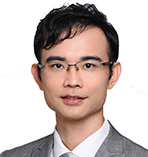
Institute of Materials Research, Tsinghua University, China
Prof. Cheng Yang is a Tenured Associate Professor at Tsinghua Shenzhen International Graduate School. He is an associate board member of Scientific Reports, technical board member of IEEE-ICEPT, and referee for more than 40 academic journals including Nature Electronics, Nature Communications, and Advanced Materials etc.
Before joining Tsinghua in 2011, he obtained his BS in Nanjing University and PhD in department of chemistry, the Hong Kong University of Science and Technology (HKUST). He also worked as Post-Doc in Department of Mechanical Engineering at HKUST and visited School of Materials Science and Engineering, Georgia Institute of Technology as visiting research faculty.
Prof. Cheng Yang’s research group mainly focuses on functional nanostructures fabrication methodology and evolution mechanism under non-equilibrium thermodynamics conditions. He has been dedicated in developing experimental platforms and related theories, and successfully realized functional nanostructures e.g. silver fractal dendrites (Nat. Commun. 2015, ACS nano 2017), nickel nanostructure arrays (Adv. Mater. 2016), “snake-cage”-like lithium dendrite structure (Nat. Commun. 2018), and hierarchical structures of metal alloys (Adv. Mater. 2021, Energy Environ. Sci. 2020, 2021), metal anode evolution mechanisms (Chem. Rev. 2021), and titanium nitride nano-forest (Adv. Mater. 2023), which show superior performance and great promise in various applications including electronic wiring, electrocatalysis, and energy storage applications.
Electric double layer capacitance-based supercapacitors are expected to replace aluminum electrolyte capacitors as an excellent candidate for future filter capacitors (FCs) due to their fast energy storage kinetics. However, there is still much room for improvement in key performance indicators such as energy density and cycle life, and the complex preparation method limits its large-scale development. The speaker demonstrates a simple laser processing method to induce the self-organization of the electrode materials including carbon based and composite ones. Particularly, the multi-physical field environment and shock wave effect of laser can induce the plasma formation, reaction, the coalescence and condensing of the nanoclusters, which can lead to fractal structures and gradient porous heterostructures by modulating the laser energy distribution in the material. By incorporating a packaging method compatible with contemporary semiconductor manufacturing processes, embedded FC with state-of-the-art performance characteristics were developed. The method we proposed here provides a versatile toolbox for designing novel nanostructures with intriguing characteristics and insights for developing advanced and miniaturized filter and power devices.